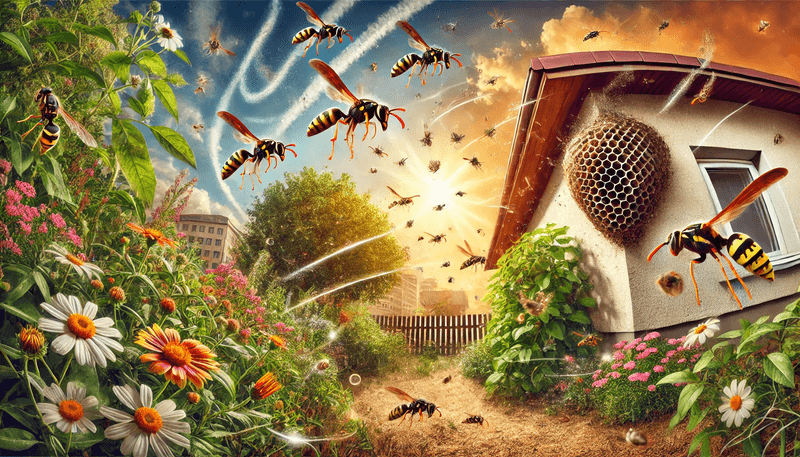
Shocking Truth: How Weather Changes Could Make Your Wasp Problem Even Worse!
The humble wasp often goes unnoticed, yet its presence can significantly impact our outdoor experiences. As climate change continues to alter weather patterns, the implications for wasp populations are profound and alarming. This article delves into the intricate relationship between weather changes and wasp populations, revealing shocking truths that could have you thinking twice before planning your next picnic!
The Basics of Wasp Life Cycles
Understanding the life cycle of wasps is essential to grasp how weather influences their populations. Wasps undergo several stages: egg, larva, pupa, and adult. The queen wasp hibernates during winter, but when winters are milder, queens tend to emerge too early from hibernation, often before sufficient food sources are available. This early awakening can cause starvation, leading to fewer colonies forming in spring. However, when weather patterns create more favourable conditions, the surviving queens lead to larger, stronger colonies.
How Temperature Affects Wasp Behavior
Temperature plays a crucial role in wasp activity. Warmer temperatures in spring and summer stimulate wasp emergence and feeding behaviour. When temperatures rise above average, wasps become more active in search of food and water, increasing their encounters with humans. This aggressive behaviour is not merely a nuisance; it can lead to dangerous situations, especially for individuals allergic to wasp stings.
Climate Change: The Bigger Picture
Climate change exacerbates these issues by altering wasps' natural habitats and seasonal cycles. As global temperatures rise, the range of wasp species expands, leading to potential invasions of new areas. This can disrupt local ecosystems, affecting other insect populations and plants and ultimately impacting human activities such as gardening and agriculture.
Why You Should Be Concerned
Why should you care about the weather’s impact on wasps? Increased wasp populations can lead to more frequent stings, greater anxiety during outdoor activities, and potential health risks for those allergic to their venom. Additionally, the ecological imbalance caused by rising wasp numbers can lead to decreased pollination for certain plants, affecting food sources.
What Can You Do About It?
Being proactive can help mitigate wasp-related issues as weather patterns change. Here are some steps you can take:
- Monitor Weather Patterns: Stay informed about local weather changes and anticipate potential increases in wasp activity.
- Remove Attractants: Keep outdoor areas clean and free of food debris to reduce wasp attraction.
- Seal Entry Points: Ensure that your home is sealed, preventing wasps from finding their way inside.
- Consider Professional Help: If you encounter a nest, consider contacting pest control to manage the situation safely.
Conclusion
In summary, the impact of weather changes on wasp populations is profound and troubling. As climate patterns shift, so does the risk associated with these often misunderstood insects. You can proactively protect yourself and your loved ones by understanding the connection between weather and wasp behaviour. Don’t let unexpected encounters ruin your outdoor fun—stay informed and prepared!
